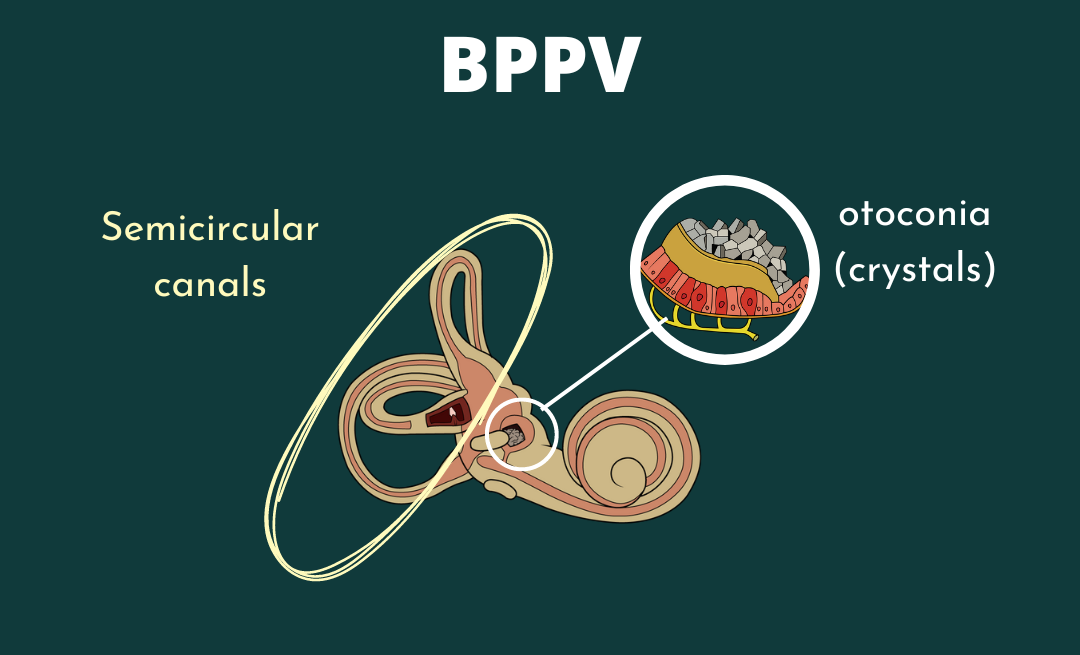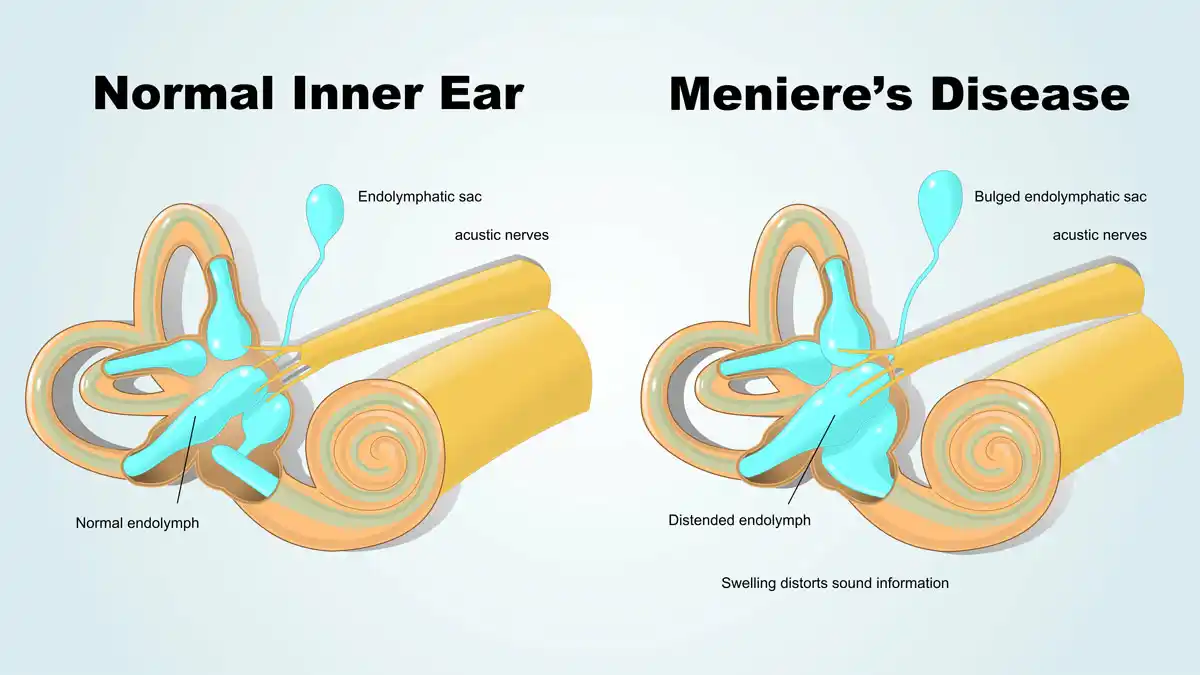Neck pain, dizziness, and what to do about it
Neck pain and dizziness is a common symptom that can have a significant impact on an individual’s daily life. It can also involve migraines, making it challenging to know where to start in finding relief. It’s important to address the root cause of the pain for long term relief and management. In this blog post, we will explore the connection between neck pain, migraines, and dizziness, and neck pain exercises.
How neck pain impacts migraines
The neck is made up of several small vertebrae, muscles, and ligaments that support the weight of the head. When these structures become injured or strained, it can cause pain that radiates to other areas of the body, including the head. Neck pain can be associated with migraine, either as a prodrome or interictal symptom. This can result in neck pain and dizziness, especially if you have vestibular migraine.
Some report feeling like their headaches start at their neck, or neck massages or stretching will set off a migraine. This lets us know that the neck is involved, and we want to continue with neck treatment BUT we need to be careful how much neck work is done at any given time to avoid setting off a migraine or headache.
Others feel like working on their neck helps improve their headache or relieves in entirely. This is great news and also tells us the neck is involved, but we can approach the neck in a different way, using neck pain exercises, stretches, manual work and other treatment options for symptom relief and long term management.
How neck pain impacts dizziness
Neck pain and dizziness are commonly paired together. When dizziness comes on, it’s natural for our body to tense up and try to limit head movements in attempts to reduce dizziness. Sometimes neck pain from an injury or tension adds to your body’s general stress and discomfort, amplifying overall discomfort and dizziness. There are also sensors in our neck that talk to our brain so we know where our head is in space. If these signals aren’t matching up with the other movement sensors in our body, or our brain is having a hard time integrating all this information, we can feel dizzy, bobble head like, spacey, and more.
Causes of neck pain
Neck pain can have many different causes, but some of the most common include:
- Poor Posture: Spending long periods sitting at a desk or slouching in a chair can cause tension in the neck muscles, leading to pain and stiffness. Poor posture doesn’t necessarily mean slouching, but just holding the same position for long periods of time. Poor posture for long periods can add additional strain on our muscles and make them work harder, potentially causing muscle strain and/or tension.
- Joint Laxity: Some of us are naturally more flexible than others. Sometimes this results in pain or discomfort from our joints because they don’t have as much support from our tendons and ligaments. Strengthening is important in these cases to build muscle tone and strength to help provide support. People with joint laxity feel may report the urge to pop or crack their joints for relief, or need to stretch. This relief is typically temporary.
- Movement Dysfunction: If the neck muscles and joints are not functioning properly, this can lead to pain and stiffness.
- Neck Injuries: Neck injuries, such as whiplash or sprains, can cause neck pain and dizziness. These injuries typically occur due to sudden movements or trauma to the neck, such as a car accident or a fall.
- Vestibular Disorders: a common statement I hear when working with those with vestibular conditions is head movements making symptoms worse. It’s natural for neck pain and tension to occur in those experiencing vestibular symptoms as your body tries to limit head movements.
- Arthritis: a natural part of aging and can result in neck stiffness and reduce mobility.
- Pinched Nerves: If a nerve is inflamed or crowded, it can cause pain, numbness, tingling.Neck pain can have many different causes, but some of the most common include:
- Poor Posture: Spending long periods sitting at a desk or slouching in a chair can cause tension in the neck muscles, leading to pain and stiffness. Poor posture doesn’t necessarily mean slouching, but just holding the same position for long periods of time. Poor posture for long periods can add additional strain on our muscles and make them work harder, potentially causing muscle strain and/or tension.
- Joint Laxity: Some of us are naturally more flexible than others. Sometimes this results in pain or discomfort from our joints because they don’t have as much support from our tendons and ligaments. Strengthening is important in these cases to build muscle tone and strength to help provide support. People with joint laxity feel may report the urge to pop or crack their joints for relief, or need to stretch. This relief is typically temporary.
- Movement Dysfunction: If the neck muscles and joints are not functioning properly, this can lead to pain and stiffness.
- Neck Injuries: Neck injuries, such as whiplash or sprains, can cause neck pain and dizziness. These injuries typically occur due to sudden movements or trauma to the neck, such as a car accident or a fall.
- Vestibular Disorders: a common statement I hear when working with those with vestibular conditions is head movements making symptoms worse. It’s natural for neck pain and tension to occur in those experiencing vestibular symptoms as your body tries to limit head movements.
- Arthritis: a natural part of aging and can result in neck stiffness and reduce mobility.
- Pinched Nerves: If a nerve is inflamed or crowded, it can cause pain, numbness, tingling.
Signs of possible neck involvement
The symptoms of neck pain can vary depending on the cause of the condition. Some common symptoms include:
- Neck Pain: The most obvious symptom of neck pain and dizziness is pain in the neck. The pain may be dull or sharp and can range from mild to severe.
- Headaches: Many people who experience neck pain and dizziness also suffer from headaches. The headaches may be located in the back of the head or around the temples.
- Dizziness: Some report sensations of their head floating, or not being connected to their head and body. These feelings may increase with head movements or neck pain.
- Numbness and Tingling: Pinched nerves can cause numbness and tingling in the neck and shoulders. This can be a sign that the nerve is being compressed and may require medical attention.
- Limited Range of Motion: Neck pain and stiffness can make it difficult to turn your head or move your neck freely.
Neck treatment options
The treatment for neck pain and dizziness will depend on the underlying cause of the condition. In some cases, the symptoms may go away on their own with time and rest. In other cases, medical intervention may be necessary. Some common treatments include:
- Exercise: Gentle stretching and strengthening exercises can help to improve neck mobility and reduce pain. It is important to consult with a healthcare provider to ensure that the exercises are safe and appropriate for each individual.
- Mindset Work: Chronic pain can often be exacerbated by stress and anxiety. Learning to manage stress through mindfulness practices or cognitive-behavioral therapy may help to reduce pain and improve overall well-being. Check out these recent blog posts that cover this more here and here.
- Movement and Posture: moving every 45 minutes and checking in on your posture is important to reduce muscle tension and strain.
- Migraine Management: Keep in mind other factors of your migraine treatment pie to reduce triggers and increase your threshold for symptom management.
Common neck exercises and stretches
Here are a variety of exercises and stretches that can help alleviate neck pain and improve mobility. Again, this can vary person to person based on the root cause of neck pain. This may assist with neck pain and dizziness, or reducing headache/mgraine frequency and intensity, or a combination of things. Listed below are common exercises used in neck pain treatment. Consult your doctor or physical therapist to make sure you’re cleared to exercise and finding the exercises that are best for you.
- Chin Tucks
- Rows. Here’s a video for home set up.
- Thoracic mobility work such as cat cows, thread the needle, and open books (laying down or upright in kneeling)
- Neck Stretches: Gentle stretching can help stretch the muscles in the neck and relieve tension. Check out this blog post that dives more into specific stretches with videos.
Neck pain and dizziness are very common and can come hand in hand. The exercises listed above can help relieve tension in the neck, shoulders, and upper back, which can reduce pain and improve mobility. It is important to consult with a healthcare professional before beginning any exercise program to ensure that the exercises are safe and appropriate for your specific condition. By incorporating these exercises into your daily routine, you can reduce neck pain and improve your overall quality of life
Want to learn more about neck pain, with example progression and exercise plans and other vestibular tools from the experts and be a part of a supportive community to get back to your daily life? Find out more below:
Disclaimer
Remember: this post is for informational purposes only and may not be the best fit for you and your personal situation. It shall not be construed as medical advice. The information and education provided here is not intended or implied to supplement or replace professional medical treatment, advice, and/or diagnosis. Always check with your own physician or medical professional before trying or implementing any information read here.







